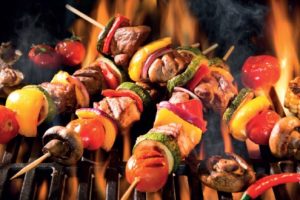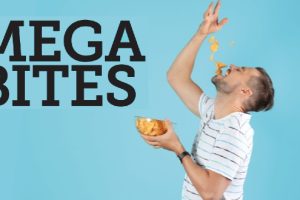Record sales
Helen Boulter, multi-sector sales controller at Taylors of Harrogate, says despite research showing less than half of convenience store shoppers like price-marked packs, retailers should expect to see this change in the coming months. John Lucas, national sales manager at Bobby’s Foods, calls price-marked packs a “solid indicator of value for money”. He says: “During the peak of the pandemic, local stores saw record sales and price-marked packs will be key in retaining some of the additional business independent retailers saw. According to Lumina Intelligence, one in three UK adults says that knowing a convenience store sells price-marked packs positively influences their decision to visit that particular store.” Naomi Tinkler, category controller at McCain, says price-marked packs are valued by consumers because they can help them stick to a budget and make shopping easier when adding items to their basket.
Bigger packs
However, Lucas says retailers should use price-marked packs sparingly. He says: “It is important to look at the product that is being price-marked, rather than looking at the number of price-marked packs. The price-mark should be used on products where it encourages purchasing.” Darryl Burgess, head of sales for Weetabix, says retailers should focus on a core range of best-selling products to help save shelf space. With this in mind, stocking the best-selling products in key formats and categories is the best move. Matt Goddard, wholesale trading director at PepsiCo, says people are actively looking for multi-packs, sharing options and take-home products from their local store, which are normally products bought as part of a weekly shop. He says: “The traditional basket of a convenience retailer has changed, with single-serve products declining, but larger pack formats increasing.”
Sharing bags
Jon Wood, commercial director of Calbee UK, which owns crisp brand Seabrook, says larger sharing bags support the impulse market, specifically £1 price-marked sharing bags, as these give shoppers an added incentive to pick up products in-store while shopping for something else. He says: “Products must be accessible for consumers at any given time and prominently displaying the £1 bags will provide shoppers with a quick and easy purchase.”
Goddard says PepsiCo’s best-selling crisp products include Walkers’ Hero 20 line-up, which is available to independent retailers in £1 price-marked packs. The brand recently added Walkers Baked Ready Salted and Cheese & Onion flavours to the £1 price-marked packs portfolio. He says the range accounts for 23% of Walkers’ sales in the sector.
Alison Adderley from Coca-Cola European Partners says there has been a shift towards people buying more products to drink later. She says: “As a result of this, there has been an increase in demand for bigger packs, such as large plastic bottles and multi-pack cans of soft drinks – a trend we expect to continue with an estimated rise of up to 38% of at-home consumption occasions each week.”
Matt Gouldsmith, channel director for wholesale at Suntory Beverage & Food GB&I, says drink-later formats are growing by 8%, with multi-pack soft drinks driving growth (up 9%). He says: “Our portfolio replicates this, as we have seen strong growth of 14.5% in Lucozade Energy’s drink-later portfolio, including one-litre bottles and multi-packs. In fact, the top three one-litre products represent 22% of the brand’s total sales, meaning it is increasingly important that retailers have a larger format offering in-store for this demand, which includes price-marked packs.”
Impulse buys
“However, we would advise retailers pay close attention to the needs of their shoppers and adapt their soft drinks range accordingly, as when areas start to come out of lockdown, we can expect demand for impulse products torise, so it’s important to carry a range of formats to become more adaptable.” Simon Gray, founder and managing director of Boost Drinks, says impulse purchases have been the chief driver of energy drink sales, and for these more impromptu buys customers want a product that clearly states its price on-pack.
Value for money
“Before lockdown, a massive 98% of energy drink sales were from customers grabbing one as a spontaneous and on-the-spot purchase. While this has changed over the past few months, we are starting to see a return in on-the-go purchasing, so would recommend retailers stock up on price-marked packs in their impulse ranges.”
Price-marked packs also appeal to shoppers looking for cheaper alternatives. Research shows 18% of shoppers feel energy drinks are too expensive, according to Mark Tanner, head of wholesale and independents at Carabao Energy Drink UK & Ireland, so retailers can afford to stock price-marked packs in this category. This also applies to products with perceived health benefits. Pavan Chandra, marketing manager for Peperami, says healthier products are typically thought of as more expensive and stocking price-marks offers “nutritionally aware consumers an alternative to confectionery and crisps, for a lower price-point.” But shoppers should be presented with a choice at the fixture and Mark Bell, strategy and planning manager at Red Bull UK, says retailers should stock both plain and price-marked packs. The Red Bull core range is available in both formats, including the Red Bull Original 250ml, 355ml, 473ml, and Red Bull Sugarfree 250ml variants.
Tempting treats
As well as energy drinks, offering price-marked options for confectionery and biscuits is another possible avenue for retailers. Mark Roberts, trade marketing manager at Perfetti Van Melle, says the impulse channel is the heartland of confectionery and Perfetti Van Melle’s price-marked pack sales are up 28%. Susan Nash, trade communications manager for Mondelēz International, says price-marked packs offer shoppers reassurance they are not being overcharged, while contributing to an overall positive price perception.
Victoria Gell, fruity confections portfolio director at Mars Wrigley, says price-marked packs build a sense of confidence and trust with shoppers. Knowing they are not being overcharged for a treat product can encourage shoppers to buy into the category.
“From a biscuit point of view, there’s no such thing as too many price-marked packs,” says Scott Snell, vice president of customer at Pladis. He says price-marked packs account for more than a third of biscuit sales in convenience stores. “Stocking best-selling products in price-marked packs, and restocking regularly, is essential in order to drive sales even further,” says Snell.
Chilled staples
Retailers can also stock price-marked packs in categories such as chilled, where more shoppers are choosing to pick up essential products from their local convenience store. Allison Wallentin, convenience category manager at Saputo Dairy UK, says value for money is important for cheese and butter. Saputo Dairy offers price-marked packs across its Clover and Utterly Butterly spread brands, as well as Country Life block butter. She says price-marked packs make up two-thirds of total Clover sales in convenience. Within cheese, the company’s Cathedral City convenience products are available in price-marked packs, including its 200g blocks, sliced, and grated formats. Wallentin says in traditional convenience retailers, price-marked packs contribute more than 95% of Cathedral City block 200g sales and three-quarters of Cathedral City Sliced and Grated sales.
Speedy solutions
Food-to-go is another category where retailers can use price-marked formats. Monisha Singh, shopper marketing manager at Kepak, which owns food-to-go brand Rustlers, says during lockdown there was a lack of people shopping for food-to-go products, but as lockdown restrictions ease there is an “increased demand for products that clearly state their price to aid their speed of shop”. She says Rustlers price-marked products are suitable for breakfast, lunch and dinner and have a “major presence in three of the key shopper missions: food-to-go, meal-for-tonight and top-up”.
 Talking Retail Grocery and product news for independent retailers
Talking Retail Grocery and product news for independent retailers






